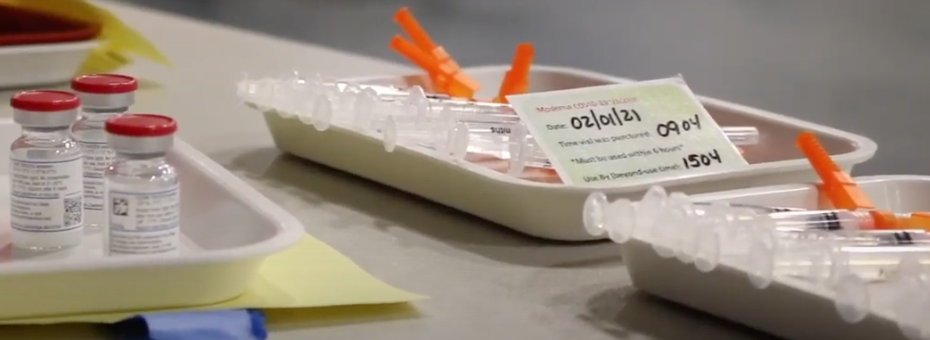No one has time, money, or resources to address the same problems again and again, especially a year into a pandemic with the emotional and physical exhaustion and never-ending stress pushing the front line to their limits day after day. It is precisely when lean thinking and practice and unwavering lean leadership are most helpful. The design and repeated modification of the work elements require the discipline of understanding the problem as best as you can and having the fortitude, patience, and support to iterate as you learn more.
Given the growing complexity occasioned by our growing return to normal processes and workflows, coordinating and rationalizing all our work into systems efficiently and effectively has become even more imperative.
Kiame Mahaniah MD, CEO, Lynn Community Health Center
So, work in the context of a Covid world – quickly moving and everchanging with lots of unknowns – requires resilience, grit, and a belief that one can make it better. Training and practice in what I’ll call “classic lean” thinking is a significant advantage.
Some argue that lean can be challenging in healthcare, where a human who has put herself into your hands to get to better health can be both the product and customer. In fact, I referred to my early lean learning journey as one that required translation of principles, tools, and concepts from manufacturing to what was then an early uncharted industry for lean. We’ve learned a lot and shared the stories from those early days with so many others over the years!
This approach, as practiced by Lynn Community Health Center (LCHC) in the early months of the pandemic, was written about here, has been honed in the months that followed. Workflows and service lines have been adjusted countless times since Spring 2020.
Kiame Mahaniah MD, CEO of LCHC, believes lean provides hope (watch minutes 10:10-13:39) and a way forward for businesses and recognizes the work is more than the mechanical and technical aspects and its components. Driven by the health center’s mission and his deep respect for the community LCHC serves, Dr. Mahaniah rallied his already overworked staff to set up a vaccination site because it was the right thing to do. Steeped in lean thinking, the staff turned to “classic lean” practices to execute this work even as they couldn’t imagine how they could do more.
Achieving Focus Amid Crisis
In any crisis, companies’ most valuable assets — their people — are wary, afraid, unsure, and exhausted. How might we put something in place so work continues to drive value while we learn at the same time? How do we do more with less, given that the pandemic brought added work to an already busy workforce? How can we make clear what we must do and what can wait? Can we move from best-practice thinking to good-enough thinking (without causing harm) to learn and think our way forward as quickly as possible so we can keep making it better for the sake of our precious frontline workers and the customers who depend on us?
At LCHC, we asked ourselves: is it possible to continue the usual work of the health center reliably and safely while creating new service lines for Covid testing and, more recently, a vaccine site in partnership with the City of Lynn, MA, for a community who continues to endure the ravages of Covid?
The only way to effect real and everlasting change is to design it.
Alice Lee, Senior Coach, LEI
In the cases of designing and building both the Covid testing center and the new Covid vaccination site, classic lean came into play as the work of both is mostly routine, repeatable, and observable. Demand is clear and driven by same-sized appointments, and takt time can be calculated. The LCHC team members implemented pull systems between leveled workstations to support flow and quality. They analyzed the work, moving steps offline to reduce setup time, and created hundreds of job breakdown sheets as the work evolved throughout the pandemic. As we tested the inaugural design at the vaccine site, we asked ourselves: is it safe, does it flow, is it a high-quality experience, and is it easy and clear for both the staff and the patient? As a result, the arrival-to-departure time at the vaccine site (which included a 15-minute observation post-vaccine for most patients) was a predictable 30 minutes.
This classic lean design, put in place and improved quickly, facilitated rapid problem-solving of endless challenges. This way of working allows people to move, learn, and adapt quickly, so improvement is truly continuous. Just this week, the team was able to add and integrate a third vaccine type with its unique work content, using quick changeovers to accommodate the unpredictable weekly allocations of vaccine types.
Their grounding in classic lean thinking enabled LCHC to celebrate the arrival of the Covid vaccines even though offering vaccinations added more work and tension to a year of stresses with ever-evolving redesigned workflows. As the new vaccine site ramped up to 1,000 vaccines given per day using the same staff to run the rest of the health center, having a shared purpose kept the entire organization lifted and moving forward. How did LCHC adapt its strategies to address both the complexities and opportunities created by the pandemic?
The Power of Purpose
There is a strong connection between clear purpose and employee motivation.
Give me the why, and I will take care of the what and how for getting there.
This mutual dependency, a shared purpose between leaders and employees, is the engine for getting better for the organization. Why are we here? Why does what I do matter? Who do we serve? Purpose ties us concretely to our customers and the organization’s work and is represented in the strategy and priorities at LCHC. With a clear and united purpose, especially in a time of great uncertainty, each team member wakes up every day with the singular goal of improving the lives of our patients and team members one small step at a time. Sharing a clear purpose is a crucial element to showing respect for your people.
One of the core values for the team at LCHC is to instill trust and confidence in the community. In fact, misinformation and mistrust may threaten Covid-19 recovery, as the community is deeply suspicious and hesitant about the vaccine. Overcoming these issues became a focal point for improvement.
According to the World Health Organization, “the social determinants of health are the nonmedical factors that influence health outcomes. They are the conditions in which people are born, grow, work, live, age, and the wider set of forces and systems shaping the conditions of daily life.”
Decades of healthcare disparities, social inequities, and racial injustice have been laid bare by Covid-19. The routine daily work at LCHC includes responding to these inequities (e.g., food, housing, education, and transportation) as health disparities are inseparable from the various forms of inequities experienced by its patients. LCHC aspires to address the impact of poverty and disease on the community with an aim to provide convenient, easy-to-navigate services for its patients: what they want, when they want, and with whom they want. This goal is no different in a year of working in a pandemic. LCHC’s very public pursuit of restorative justice with a lean lens provides an edge in designing respectful work and the dignity it conveys to those closest to those in need of LCHC’s loving care.
To address these disparities, LCHC team members developed new services even as they struggled to deliver their usual patient care in a pandemic. Examples include:
- Testing and Vaccine Promotion & Education at the mobile food market and local churches to overcome the community’s mistrust of the vaccine.
- PPE (Personal Protective Equipment) Distribution to keep their community healthy and safe.
- Testing and Vaccine Promotion & Education at the mobile food market and local churches to overcome the community’s mistrust of the vaccine.
- PPE (Personal Protective Equipment) Distribution to keep their community healthy and safe.
Investing in People
LCHC is an engine for economic and professional change in the lives of LCHC employees and their families, many of whom are patients at the health center and live in the community. LCHC achieves its mission to their families as much by providing illness-defying care as by advancing their careers. Investing in its employees’ careers is a crucial building block. Respect for the employees is respect for the community.
The belief and reliance on classic lean thinking help LCHC fulfill its mission to present its patients with clinical and operational excellence. Lean thinking has instilled the discipline and the flexibility to keep adapting to the challenge of meeting its patients’ needs, external stakeholder pressures, and ever-changing regulatory landscape – even during a global health crisis. The steadfast leadership of lean thinking CEO Dr. Kiame Mahaniah provides the important why when so much time and energy must focus on what and how.
Special thanks to LCHC CEO Kiame Mahaniah, MD, whose leadership inspires so many.
The Lynn Community Health Center is located 10 miles from downtown Boston, in the economically, culturally, and socially diverse city of Lynn, MA. As a federally qualified health center, LCHC serves more than 40,000 patients who speak 72 different languages and hail from 113 countries. More than 90% of them live at or below 200% of the federal poverty line. LCHC is a place of hope and love, where caregivers provide long-needed services to a population often maligned and forgotten, where every patient is addressed with terms of respect, and every life is held in the highest regard.
Virtual Lean Learning Experience (VLX)
A continuing education service offering the latest in lean leadership and management.




